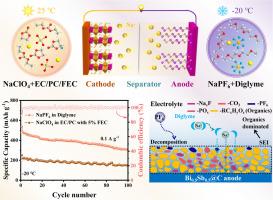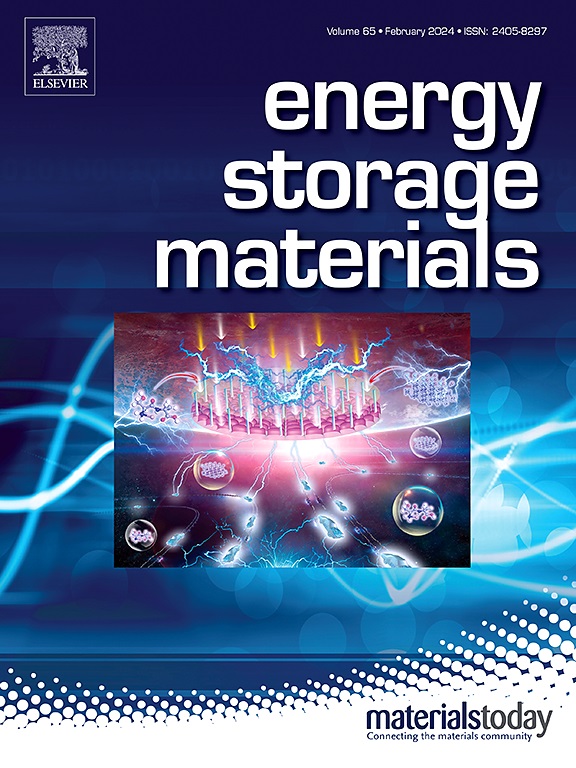Spatio-temporal evolution of bimetallic anode with stress-relaxation effect in sodium storage under ambient and cryogenic temperature
IF 18.9
1区 材料科学
Q1 CHEMISTRY, PHYSICAL
引用次数: 0
Abstract
The sluggish diffusion kinetics and limited capacity of individual Bi or Sb restrict their application in sodium-ion batteries (SIBs). While Binary alloy systems featuring flexible tunability are compatible with high-stability/capacity characteristics, exhibiting promising potential as anode. Herein, a series of composites BixSb1-x@C (x = 0.1, 0.3, 0.5, 0.7, 0.9) are constructed by regulating the introduction of Sb salts in Bi-MOF precursor, where Bi0.5Sb0.5 with the optimal Na+ adsorption/diffusion properties. Moreover, through sophisticated finite element simulations, the unique “stress-relaxation effect” in the BiSb system, significantly dissipating the accumulation of internal stresses and effectively attenuating the structural strain from Na+ insertion, is unveiled. Besides, exhaustive explorations targeting the spatio-temporal evolution mechanism uncover that the optimized stabilized structure efficiently promotes electron and Na+ transfer dynamics, obviates alloy crushing, and simultaneously synergize interactions with the ester- and ether-based electrolytes to form robust solid-electrolyte interphase (SEI), which enables the Bi0.5Sb0.5@C electrode with superior kinetics and ultra-stable cycling capability at ambient and cryogenic temperature. The first exploration of the low-temperature properties of BiSb alloy in this study not only enriches the application prospects of the binary alloy system but also offers instructive implications for the exploration of alloy-type anode in subsequent extreme conditions.

求助全文
约1分钟内获得全文
求助全文
来源期刊

Energy Storage Materials
Materials Science-General Materials Science
CiteScore
33.00
自引率
5.90%
发文量
652
审稿时长
27 days
期刊介绍:
Energy Storage Materials is a global interdisciplinary journal dedicated to sharing scientific and technological advancements in materials and devices for advanced energy storage and related energy conversion, such as in metal-O2 batteries. The journal features comprehensive research articles, including full papers and short communications, as well as authoritative feature articles and reviews by leading experts in the field.
Energy Storage Materials covers a wide range of topics, including the synthesis, fabrication, structure, properties, performance, and technological applications of energy storage materials. Additionally, the journal explores strategies, policies, and developments in the field of energy storage materials and devices for sustainable energy.
Published papers are selected based on their scientific and technological significance, their ability to provide valuable new knowledge, and their relevance to the international research community.
 求助内容:
求助内容: 应助结果提醒方式:
应助结果提醒方式:


